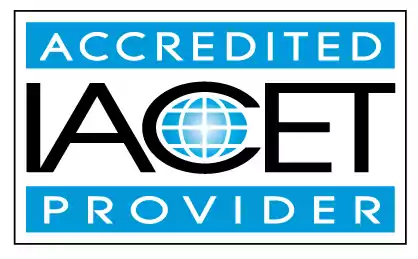Demonstrate an understanding of teacher vs. child directed activities.
Discover the difference between teacher-directed and child-directed activities in early childhood education and child care centers. Learn appropriate practices for identifying and demonstrating these activities to promote optimal learning for children. Gain a comprehensive understanding of the benefits and strategies of each approach.Trainings incorporating this outcome
CDA Subject Areas
Proficiency Level
Target Audience
Topic Areas
States
Alabama (9) Alaska (9) Alberta (9) Arizona (9) Arkansas (2) Australia (9) California (9) Colorado (9) Connecticut (9) Delaware (9) District of Columbia (9) Florida (9) Georgia (8) Hawaii (9) Idaho (9) Illinois (2) Indiana (9) Iowa (9) Jamaica (9) Kansas (9) Kentucky (2) Louisiana (9) Maine (9) Manitoba (9) Maryland (9) Massachusetts (9) Michigan (9) Minnesota (7) Mississippi (9) Missouri (2) Montana (9) Nebraska (8) Nevada (8) New Hampshire (9) New Jersey (4) New Mexico (9) New York (7) Newfoundland and Labrador (9) North Carolina (2) North Dakota (9) Nova Scotia (9) Ohio (9) Oklahoma (9) Ontario (3) Oregon (7) Pennsylvania (8) Prince Edward Island (9) Puerto Rico (9) Quebec (9) Rhode Island (9) Saskatchewan (9) South Carolina (2) South Dakota (9) Tennessee (4) Texas (8) Thailand (9) United Kingdom (9) Utah (9) Vermont (9) Virgin Islands (9) Virginia (9) Washington (9) West Virginia (9) Wisconsin (7) Wyoming (6)
120 hours courses
45 hours courses
35 hours courses
4 hours courses
3 hours courses
2 hours courses
Related Outcomes
- Demonstrate an understanding of teacher direct vs. child directed activities
- Identify appropriate practices for identify and demonstrate an children: Teacher directed vs child directed
- Identify and understand the requirements of Child Care Subsidy (POC), Child and Adult Food Program, MSDE Child Care Credential, Tiered Reimbursement, and the Child Care Career and Professional Development Fund
- Recognize the importance of maintaining a balance between teacher directed and child directed activities
- Demonstrate understanding of strategies that utilize good time management practices for teachers and child care providers.
- Identify appropriate practices for teacher- and child-directed activities.
- Demonstrate understanding of developing positive relationships with child care families
- Demonstrate understanding of optimal room arrangements for family child care settings and their components.
- Demonstrate an understanding of the most effective way to listen to a child.
- Demonstrate an understanding of staff scheduling and student enrollment aligned with Child Care Regulations.
- Demonstrate understanding of inclusionary practices for cerebral palsy in the child care setting.
- Demonstrate understanding of developing strategies for involving parents in the child care setting.
- Demonstrate understanding of cultural differences and its influences on a child's social behavior.
- Demonstrate understanding of inclusionary practices for conduct disorder in the child care setting.
- Demonstrate an understanding of how genetics and environment influence child growth and development
- Demonstrate an understanding of the overall cost of child care
- Demonstrate an understanding of concepts within the activity and content area for the visual arts for school-age.
- Demonstrates an understanding of content areas and how they relate to child development
- Demonstrate an understanding of how to create a natural outdoor classroom that supports child development in all areas.
- Demonstrate an understanding of content areas and how they are related to child development.
Related Articles
- Child care education
- North Dakota and the Child and Adult Care Food Program
- The Power of Play: Unleashing Potential in Early Childhood Education
- Unlocking the Power of DAP
- ChildCareEd’s Montessori Curriculum Training
- The Great Snowman Debate: Montessori vs. Traditional Methods for Building Frosty Friends
- Ensuring Classroom Safety: The "1, 2, 3, Eyes on Me" Tool
- How Cultural Influences Shape Child Development
- Why Do Children Need So Much Repetition?
- 🧩 What Does ABA Look Like in the Classroom? 🎓 What Teachers Should Know
- Understanding Separation Anxiety in Young Children
- 📚 Which Trainings Are Required for Childcare Staff in California?
- 📜 What Is Title 22 in California Childcare?
- Open-Ended Art Activities That Build Confidence in Preschoolers
 12 CEUs
12 CEUs